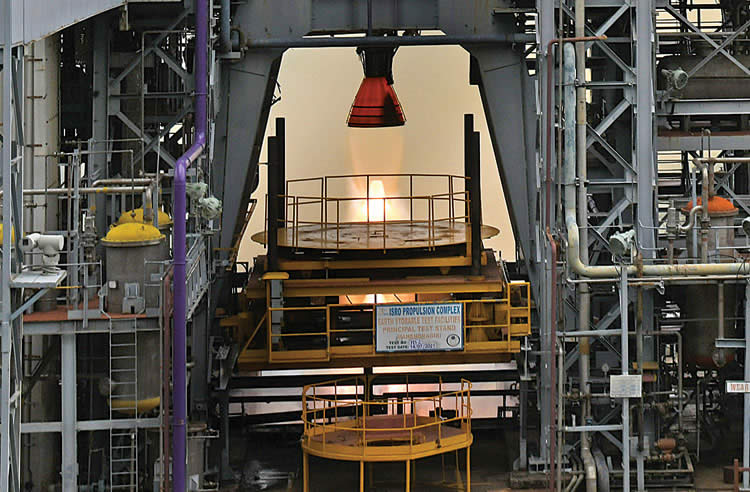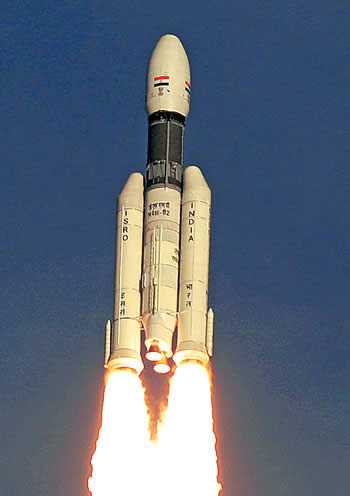INDIAN ARMED FORCES CHIEFS ON OUR RELENTLESS AND FOCUSED PUBLISHING EFFORTS

The insightful articles, inspiring narrations and analytical perspectives presented by the Editorial Team, establish an alluring connect with the reader. My compliments and best wishes to SP Guide Publications.

"Over the past 60 years, the growth of SP Guide Publications has mirrored the rising stature of Indian Navy. Its well-researched and informative magazines on Defence and Aerospace sector have served to shape an educated opinion of our military personnel, policy makers and the public alike. I wish SP's Publication team continued success, fair winds and following seas in all future endeavour!"

Since, its inception in 1964, SP Guide Publications has consistently demonstrated commitment to high-quality journalism in the aerospace and defence sectors, earning a well-deserved reputation as Asia's largest media house in this domain. I wish SP Guide Publications continued success in its pursuit of excellence.
- The layered Air Defence systems that worked superbly, the key element of Operation Sindoor
- Operation Sindoor | Day 2 DGMOs Briefing
- Operation Sindoor: Resolute yet Restrained
- India's Operation Sindoor Sends a Clear Message to Terror and the World – ‘ZERO TOLERANCE’
- Japan and India set forth a defence cooperation consultancy framework, talks on tank and jet engines
India Advancing towards its first human spaceflight mission
ISRO successfully conducts the third long duration hot test of the liquid propellant Vikas Engine for the core L110 liquid stage of the human rated GSLV MkIII vehicle

India’s space agency has moved one more step further on its way towards the nation’s first manned space mission by completing another successful engine test. On July 14, 2021, the Indian Space Research Organisation (ISRO) successfully conducted the third long duration hot test of the liquid propellant Vikas Engine for the core L110 liquid stage of the human rated GSLV MkIII vehicle, as part of the engine qualification requirements for the Gaganyaan programme, stated ISRO’s media brief.
The engine was fired for a duration of 240 seconds at ISRO’s Propulsion Complex (IPRC) engine test facility in Mahendragiri, Tamil Nadu. The agency informed that the performance of the engine met the test objectives and the engine parameters were closely matching with the predictions during the entire duration of the test.
Amid the social media appreciation that came pouring for India’s space agency, SpaceX founder Elon Musk also took to Twitter to congratulate ISRO on this achievement.

Gaganyaan is ISRO’s most ambitious project of sending humans to space. Until now, only three nations (Russia, United States of America and China) have launched their own crewed spacecraft. One of the major objectives of the Gaganyaan programme is to demonstrate indigenous capability of India to undertake human space flight mission to low earth orbit (LEO). “The programme envisages undertaking the demonstration of human spaceflight to LEO in the short-term and lay the foundation for a sustained Indian human space exploration programme in the long run,” stated ISRO. The agency also believes that having a vibrant human spaceflight programme can be leveraged as a potent foreign policy tool.
With the Gaganyaan mission, India’s first “vyomanauts” (Indian astronauts) would be going to the LEO, onboard an Indian vehicle. The first unmanned mission was earlier planned for December 2021 and the second one was scheduled for 2022-23. However, given the delays that the programme has experienced due to the pandemic, the launch is likely to take place only next year. The uncrewed missions are aimed for technology demonstration, safety and reliability verification and will be heavily instrumented to study the performance of systems before crewed flight.
Meanwhile, four Indian Air Force (IAF) test pilots are already undergoing generic space flight training in Russia as part of the Gaganyaan programme. These astronaut trainees have been selected based on criterion jointly defined by ISRO and IAF which comprises of flying experience, fitness, psychological and aeromedical evaluation (including anthropometric parameters).
The Human Space Flight Centre (HSFC) was also inaugurated in 2019 at ISRO headquarter campus in Bengaluru where a full scale model of Gaganyaan’s crew module was also unveiled. HSFC shall be responsible for implementation of Gaganyaan Project which involves end-to-end mission planning, development of engineering systems for crew survival in space, crew selection & training and also pursue activities for sustained human space flight missions, ISRO had stated.
As part of the Gaganyaan programme, two unmanned missions and one manned mission have been approved by the Government of India
With some of the major collaborating partners including the Indian armed forces, the Defence Research Development organisation (DRDO), Indian maritime agencies, Indian Meteorological Department, academic institutes, and industry partners, Gaganyaan is a national effort. The overall programme co-ordination, systems engineering and implementation as well as the human rated launch vehicle, crew escape system, orbital module and essential infrastructure will be realised by ISRO utilising the in-house expertise with participation of industry, academia and national agencies. The private players in the country will also be effectively utilised in the programme.
In June 2020, the space sector of India was opened up to the private sector enabling the participation in the entire gamut of space activities, allowing private firms and startups to build satellites and rockets, besides offering space services to customers in the country and across the world. The government also shifted all operational assets of ISRO to New Space India Ltd (NSIL), a commercial entity, and formed the Indian National Space Promotion and Authorisation Centre (IN-SPACe) as a regulator to ensure a level-playing field for the private sector.
As part of the Gaganyaan programme, the total cost for which is estimated at 9023.00 crores, two unmanned missions and one manned mission have been approved by the Government of India. The benefits, as identified by ISRO, of this human spaceflight programme include:
- Progress towards a sustained and affordable human and robotic programme to explore the solar system and beyond.
- Advanced technology capability for undertaking human space exploration, sample return missions and scientific exploration.
- Future capability to actively collaborate in global space station development & to carry out scientific experiments of interest to the nation.
- Create a broad frame work for wider Academia – Industry partnership in taking up development activities for national development.
- Ample scope for employment generation and human resource development in advanced science and R&D activities.
- Unique opportunity to inspire and excite Indian youth and steer many students toward careers in science and technology towards challenging jobs that encourage knowledge, innovation and creativity.
- Strengthen international partnerships and global security through the sharing of challenging and peaceful goals.
The Vikas engine is the workhorse liquid rocket engine powering the second stage of India’s Polar Satellite Launch Vehicle (PSLV), second stage and the four strap on stages of Geosynchronous Launch Vehicle (GSLV) and the twin engine core liquid stage (L110) of GSLV MkIII.
ISRO’s heavy lift launcher, GSLV MkIII which was identified for the Gaganyaan Mission, was also chosen to launch Chandrayaan-2 spacecraft. GSLV MkIII is a three-stage heavy lift launch vehicle developed by ISRO, which is designed to carry four tonne class of satellites into Geosynchronous Transfer Orbit (GTO) or about 10 tonnes to LEO. NASA (National Aeronautics and Space Administration) already has had a constant presence in the LEO with the International Space Station (ISS) for over two decades. NASA believes, a robust and competitive LEO economy is vital to continued progress in space and also has also been working on a Plan for Commercial LEO Development. With more and more countries now joining the space club and marking their presence in LEO with their satellites, India’s Gaganyaan mission will be very significant. The success of the programme is expected to be followed by activities associated with India’s own space station as an extension of Gaganyaan Programme. The agency had highlighted that Indian space station will be a platform for conducting scientific and industrial research in myriad areas of fundamental, applied and engineering sciences.





